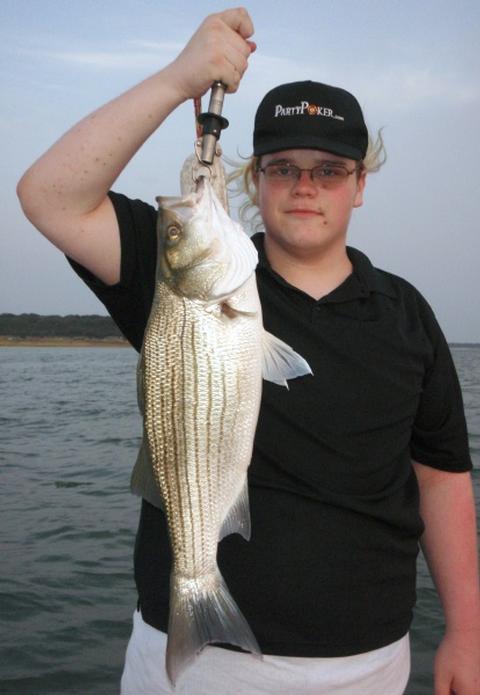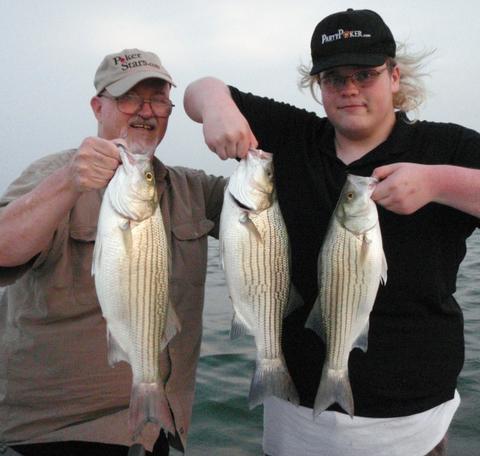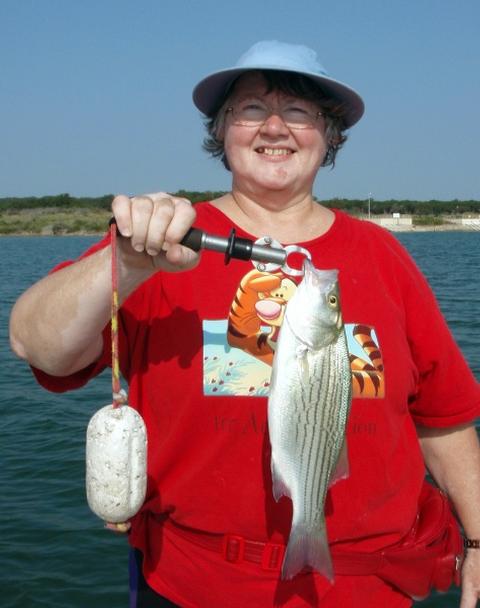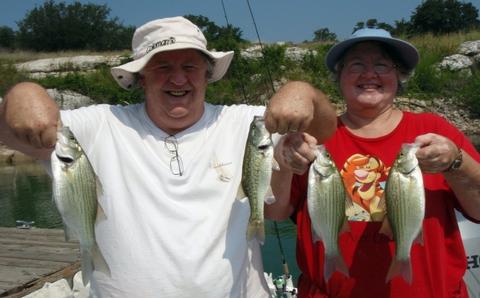I fished an evening trip on Belton Lake today with William L. of Las Vegas, NV, and 15 year old son, Casey. The family is new to the area and getting acquainted with some of our local outdoor options, and so booked a trip with me to see what mid-summer Central Texas fishing is like.

Casey with his sweet 7.25 pound hybrid striped bass which measured 25.50 inches.

William and Casey with a trio of keeper that fell for our downrigging program.
The pair had some previous experience fishing for school-sized striped bass on Lake Mead and other Colorado River chain lakes out west, but had never downrigged before. I was impressed in that after I explained to them what we’d be doing, they researched the method on the internet so they had some idea of what to expect, and were looking forward to putting theory into practice. I explained that this was the single most effective tactic in the heat of the summer unless (very unpredictable) topwater action broke out.
So, we met around 5:30pm and got to work. We had a very quiet first hour on the water, hooking 5 fish and only boating 2, including a single white bass at Area 472, and another just east of Area 478.
Around 6:30, we made our way over to Area 084 and planned, based on solid sonar returns showing bait and gamefish here, to set up with a series of staggered ellipses. Well, about 40 yards and about as many seconds after setting our first ball down to depth, we were fast onto our first of 23 fish to be taken from this area — a circuit just a few yards W. of Area 084, and oriented N and S.
We kept the program going by first increasing our bait size (changing from P12’s to P13’s that I made), then going from silver to white. Over the next 90 minutes we boated 8 keeper hybrid including one of our better hybrid of the year, a 25.50 inch, 7.25 pounder that Casey fought to the boat while doing really well and keeping his calm. We also boated 3 other short hybrid, and 11 more white bass.
I looked every so often for topwater, but saw none, as the SE wind was blowing ~12mph and making the surface a bit rough to observe. I spoke with another Belton “regular” and he went our specifically in search of topwater, but, judging by how quickly he returned, I suspect he found none.
By dark, we were still graphing fish galore, but they’d done all they were going to do, so, we called it a great day and headed back in.
Both men boated personal best fish on this trip, with William putting a 5.00 pounder over the side, and, of course, with Casey sliding his 7.25 pounder into the net.
Great job, fellows!!
TALLY = 25 FISH, all caught and released
Today’s conditions:
Start Time: 5:30pm
End Time (AM): 8:40pm
Air Temperature at Trip’s Start: 98F
Water Surface Temperature: 88.1F
Winds: SSE7-12
Skies: Fair and partly cloudy.



